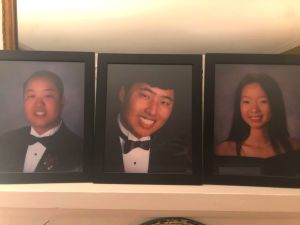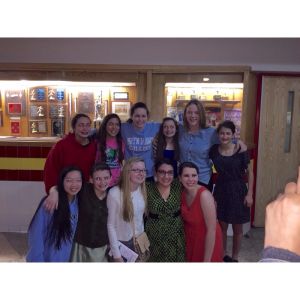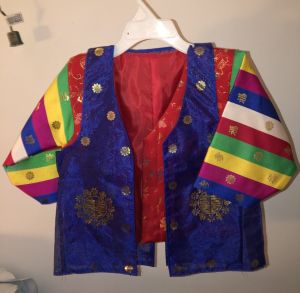I used to live every day like it didn’t matter that I was different from the rest of my community. It had never crossed my mind that I am not like the others who surround me. For 17 years, I was blind-sided by myself.

I have two older brothers who are Asian-American, and a mom and dad who are Caucasian. My household has no blood relation, but this doesn’t make it any less of a home. For years, my mom tried to indulge me in my Korean culture, although it wasn’t easy.
Around 2006, my parents stopped bringing me to Korean culture festivities. “We wanted you to be around people who looked like you,” Mom said. But I was just a kid who wanted to go to the playground, play sports and hang out with friends. I didn’t care about learning what our culture was like. It didn’t seem like it would cause any negative effects until I got older.
Growing up, I went to all Catholic schools where I was the one and only person who was not Caucasian. There was a brief year and a half of public school that changed everything for me.

I was friends with a group of 10 white girls, and we named our group “The A-Team.” Each of us had a nickname and mine was “the Asian.” I had no idea the future detriment it would cause until 8th grade. Rebecca Yi, the only other Asian student in my class, came up to me and asked if she could have my contact. As I finished typing my name she said, “oh, you’re adopted!” I replied excitedly and asked her if she was adopted too and she said, “no, you just don’t have an Asian last name.”
What did that mean? It wasn’t until high school that I finally figured out my American name is not the same as my birth name. My birth name is Kyoo Ree Lee. This translates to “profitable fortune,” so I suppose my biological mom knew I’d have something good to offer.
Despite knowing my birth name, I didn’t understand what my last name entailed. Every time attendance was taken in school, I received puzzled looks from teachers after they read “Schmader.” All throughout high school, I’d tell people to call me “Asian Anna” so I could have my name known.
Being adopted has been the most interesting aspect of my life that I’ve been able to tell others about. It was estimated that there were more than 110,000 children adopted from South Korea to the United States between 1955 and 2001. My brothers and I were part of those adopted children.

A giant part of being adopted that is most times overlooked is my biological parents. Who are they? Where are they? What do they look like? Over recent years, I’ve asked my mom about my biological mom and the one thing that she always made sure I knew was that there isn’t a lot of information about her.
In South Korea, it’s shameful to have a child without a husband or out of wedlock. But my biological mother still had me and placed me in Holt Children’s Services Inc. in hopes I’d have a better life. Since I’ve known she went out of her way to find an adoption agency, I believe she did love me even though that’s hard to say.
To say the least, it has been a long 20 years of fighting off stereotypes, demeaning comments, derogatory names and feeling alone. Now I’ve put up a strong foundation and I’m looking for my biological mom soon, bye!


